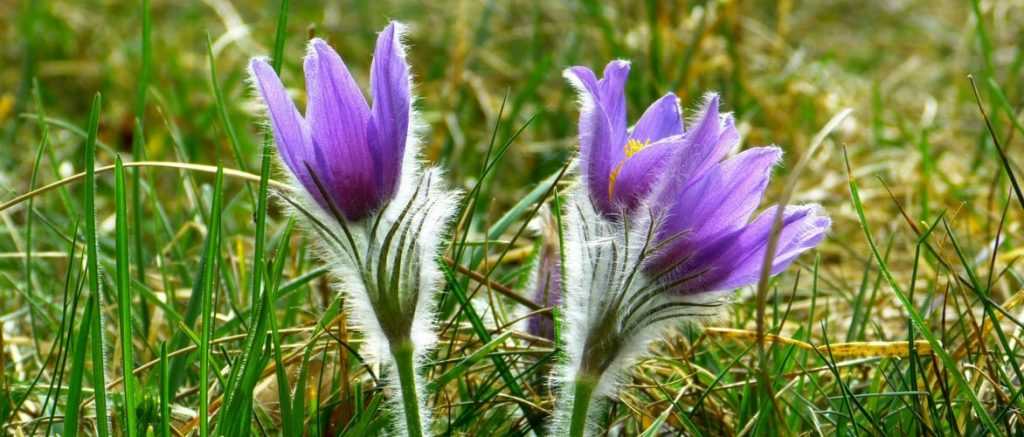
10 Perennial Plants for Early Spring Blooms
The Best Varieties to Forget About Winter!
Contents
No sooner do temperatures begin to soften than numerous perennials rush to bloom, heralding in a burst of colour the awakening of the garden and the end of the bleak season. They warn us that fine days are returning! The stars of this period are the hellebores, or Lenten roses and their many variations.
To accompany these early perennials, you can enliven your flowerbeds with small spring bulbs (e.g. spring Crocus) and plants with evergreen foliage, such as heucheras. Don’t hesitate to add colour to your garden by placing a few plants in prominent view from your windows, or along the path leading to your house.
Lenten Rose (Helleborus orientalis)
The Lenten rose is an essential perennial to brighten gardens from late winter onwards. This elegant hellebore comes in numerous hybrids with single or double flowers, displaying an incredible colour palette: pure white, soft pink, deep purple-red, raspberry, zesty green, velvety black, yellow, orange or even salmon.
Its evergreen foliage, tough and decorative all year round, forms the perfect setting for its refined cup or star-shaped flowers. The Lenten rose thrives in shady to partially shady spots, sheltered from direct sunlight which could damage its leaves. Plant it in cool, humus-rich, well-drained soil. It also adapts very well to container growing, to brighten up patios and balconies.
Gardening tip: as soon as the first flowers bloom, highlight them by cutting back the old leaves, often damaged by winter. This allows you to better appreciate the beauty of the flowers and helps prevent foliar diseases such as hellebore black spot. A light summer mulch will help retain soil moisture.
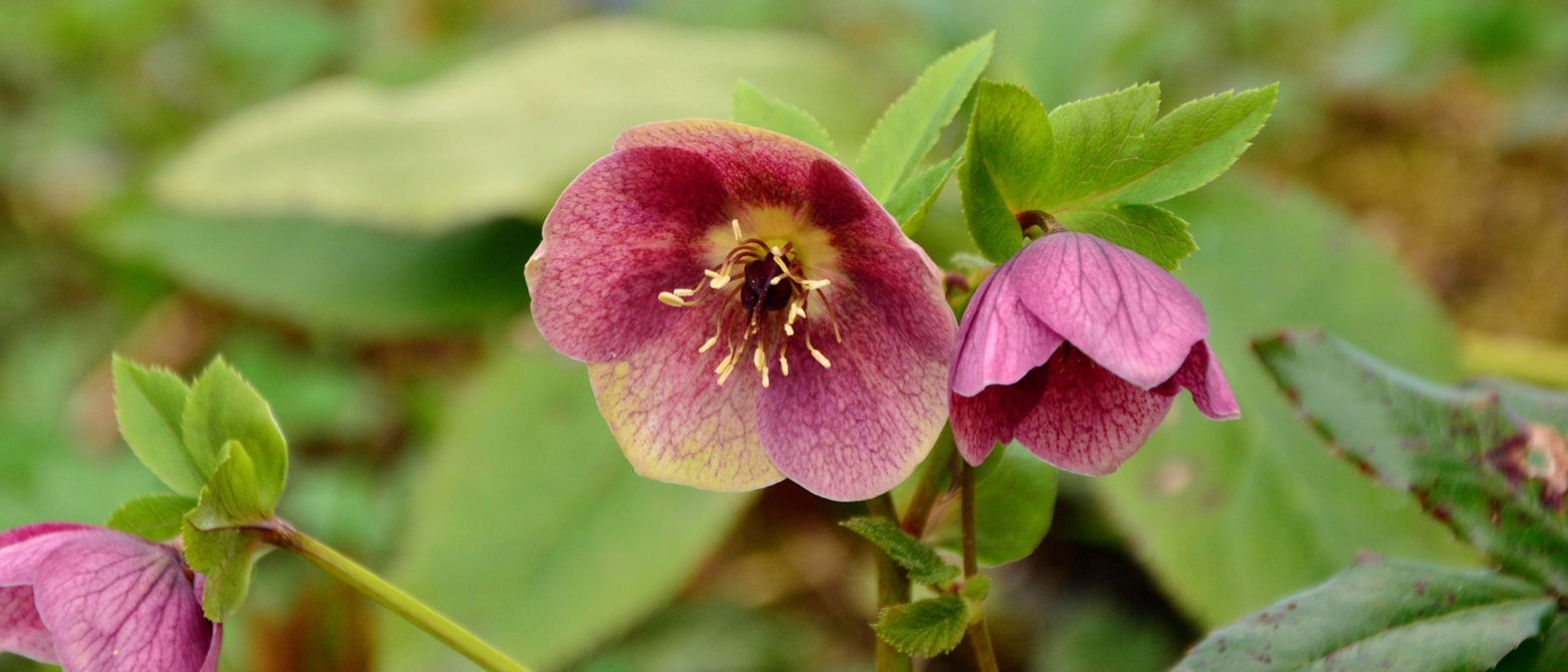
The lungwort (Pulmonaria saccharata)
The lungwort is a hardy and decorative perennial, perfect for brightening up shady corners of the garden. From late winter onwards, it produces lovely clustered flowers in shades of blue, violet, and sometimes pink or red for varieties like Pulmonaria rubra, the earliest bloomer, which flowers as early as February. Other varieties bloom from March to April.
Its ornamental foliage, marked with creamy white or silvery spots, remains decorative after flowering. The ‘Majesté’ variety, for example, is prized for its striking silvery leaves and delicate pink flowers.
Plant lungwort in shade or partial shade, in cool, rich soil that stays moist in summer. Easy to grow, it self-seeds readily and spreads quickly, making it an excellent ground cover. It pairs beautifully with Lenten roses, creating lovely contrasts in textures and colours.

The primrose (Primula vulgaris)
A true emblem of early spring, the English primrose brightens up flower beds, borders and planters at the first signs of milder weather, with blooms that last until mid-spring. Easy to grow, it offers a burst of colour thanks to numerous horticultural varieties with single or double flowers.
Among the most remarkable, the ‘Belarina Valentine’ variety charms with its intense red double flowers, while Primula ‘Zebra Blue’ catches every eye with its blue and white striped petals. Primroses also come in bright yellow, soft pink, deep purple or delicate blue, often enhanced by a vibrant yellow centre – the plant’s signature feature.
Primroses thrive in partially shaded locations and prefer cool, rich, well-drained soil. Perfect for planters, flower beds or borders, they bring a cheerful touch to the garden from late winter onwards. Remember to water them regularly during dry spells to prolong flowering.
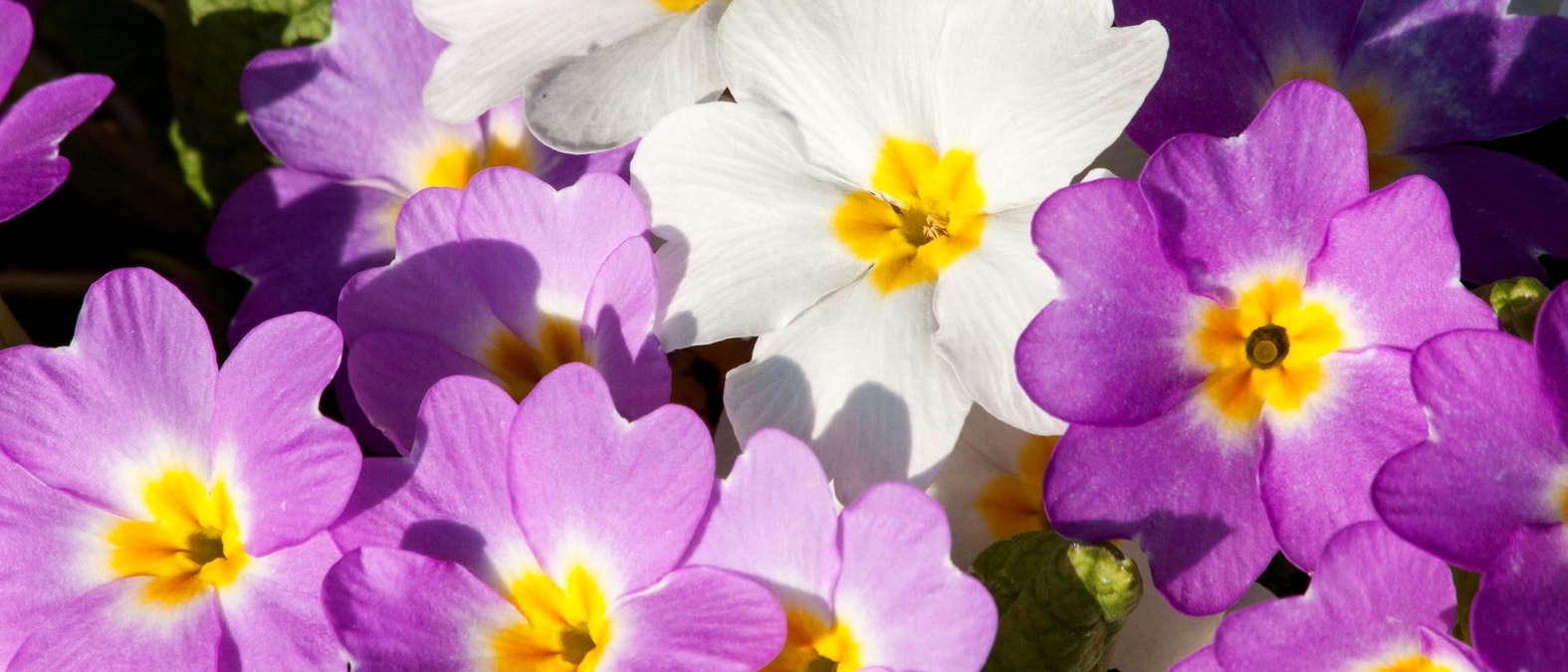
Spring vetchling (Lathyrus vernus)
The Spring Vetchling is an early-flowering perennial sweet pea that blooms as early as mid-February, well before most other perennials. Compact and elegant, it reaches about 40 cm in height and forms a dense clump of bright green, slightly veined leaves that remain decorative after flowering.
Its delicate flowers, clustered in racemes, display intense blue-violet hues, with variations ranging from soft pink to pure white depending on the cultivar. The flowering is not only early but also long-lasting, spanning nearly two months, adding a lovely splash of colour to shady borders.
The Spring Vetchling prefers shaded or semi-shaded spots, particularly at the base of shrubs or roses, where it enjoys dappled light. It thrives in cool, humus-rich, well-drained soils. Low-maintenance and hardy, it requires little care beyond occasional watering during prolonged dry spells.
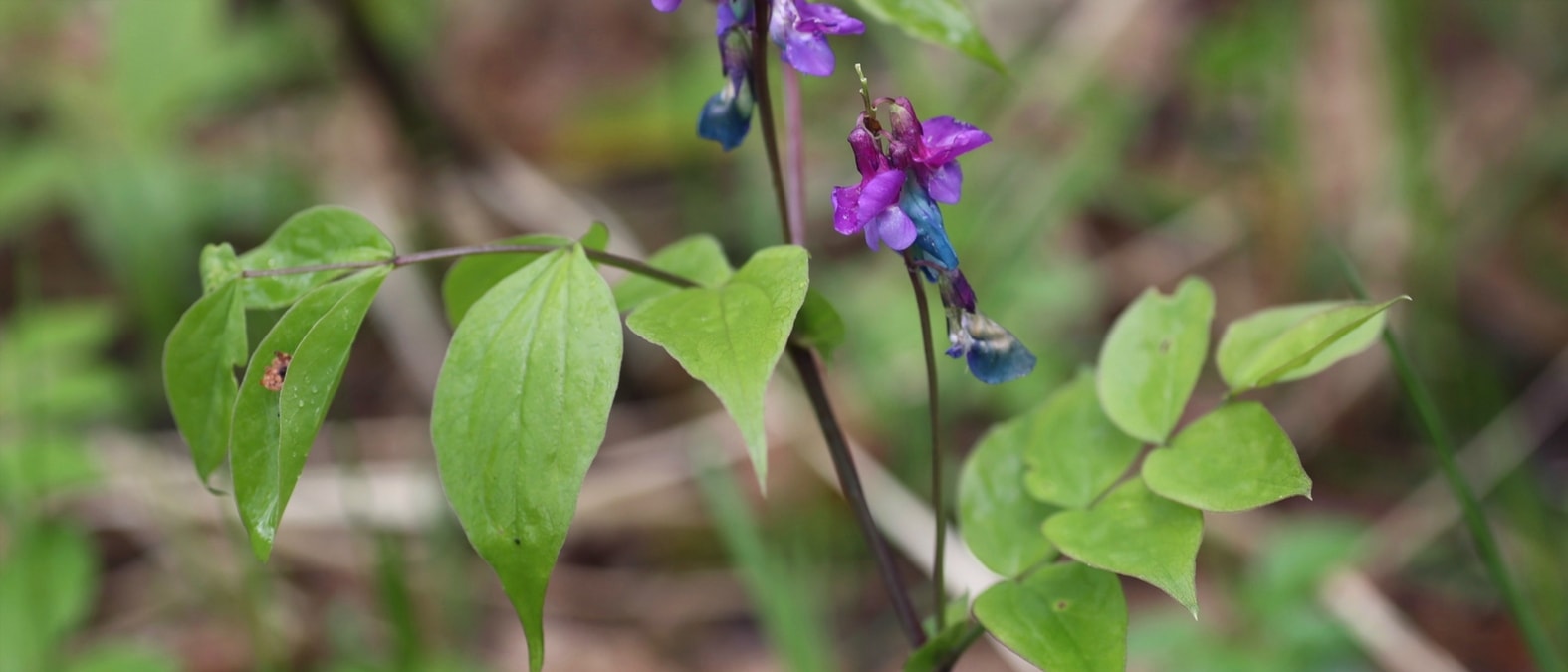
The violet (Viola odorata)
Delicate and fragrant, the sweet violet is a small creeping perennial that grows naturally in woodlands and forest edges, in cool, rich soil. It spreads via stolons, gradually forming a lovely carpet of greenery and flowers. Single-flowered varieties are hardier than double-flowered ones and produce abundant blooms from late winter onwards.
While wild violets typically display deep violet-blue hues, some varieties offer white, mauve, pink, or even pale yellow tones. The ‘Alba’ variety, with its bright white flowers, is perfect for brightening shady spots.
Plant it in shade or partial shade, in moist, humus-rich soil. It self-seeds readily and makes an excellent ground cover, ideal for natural borders or woodland gardens.
Gourmet tip: Its edible flowers are perfect for enhancing salads, pastries, or infusions and can even be crystallised for a unique decorative touch.

Bergenia (Bergenia x cordifolia)
The bergenia is a hardy perennial that makes excellent ground cover with its large, thick, evergreen and glossy leaves. Its leathery foliage remains decorative all year round, taking on lovely bronze, purple or coppery hues in winter, depending on the variety. The upper surface, often dark and varnished, contrasts beautifully with the pinkish underside.
From late winter, it is adorned with numerous small bell-shaped flowers, clustered in dense spikes. The blooms range from bright pink to delicate white, adding a splash of colour to flower beds still dormant from the cold.
Bergenia is undemanding and adapts perfectly to challenging conditions, particularly dry shade where few plants thrive. It prefers well-drained soil but also tolerates poorer ground. Low-maintenance, simply remove damaged leaves after winter to revive its lustre.

The Caucasian Leopard's Bane (Doronicum orientale)
The Caucasian leopard’s bane is a bright perennial that illuminates flower beds as early as April with its vibrant yellow blooms, resembling little suns. Its large daisy-like flowers create a lovely contrast with its fresh green foliage, adding brilliance to borders and light woodland areas.
This plant can reach up to 60 cm in height and forms dense clumps that gradually spread thanks to its creeping rhizomes.
Leopard’s bane prefers a sunny to partially shaded position and well-drained soil, as it dislikes excess moisture, which may lead to root rot. Perfect for flower beds, it pairs beautifully with spring perennials such as forget-me-nots, primroses, or pansies for a guaranteed colourful effect.
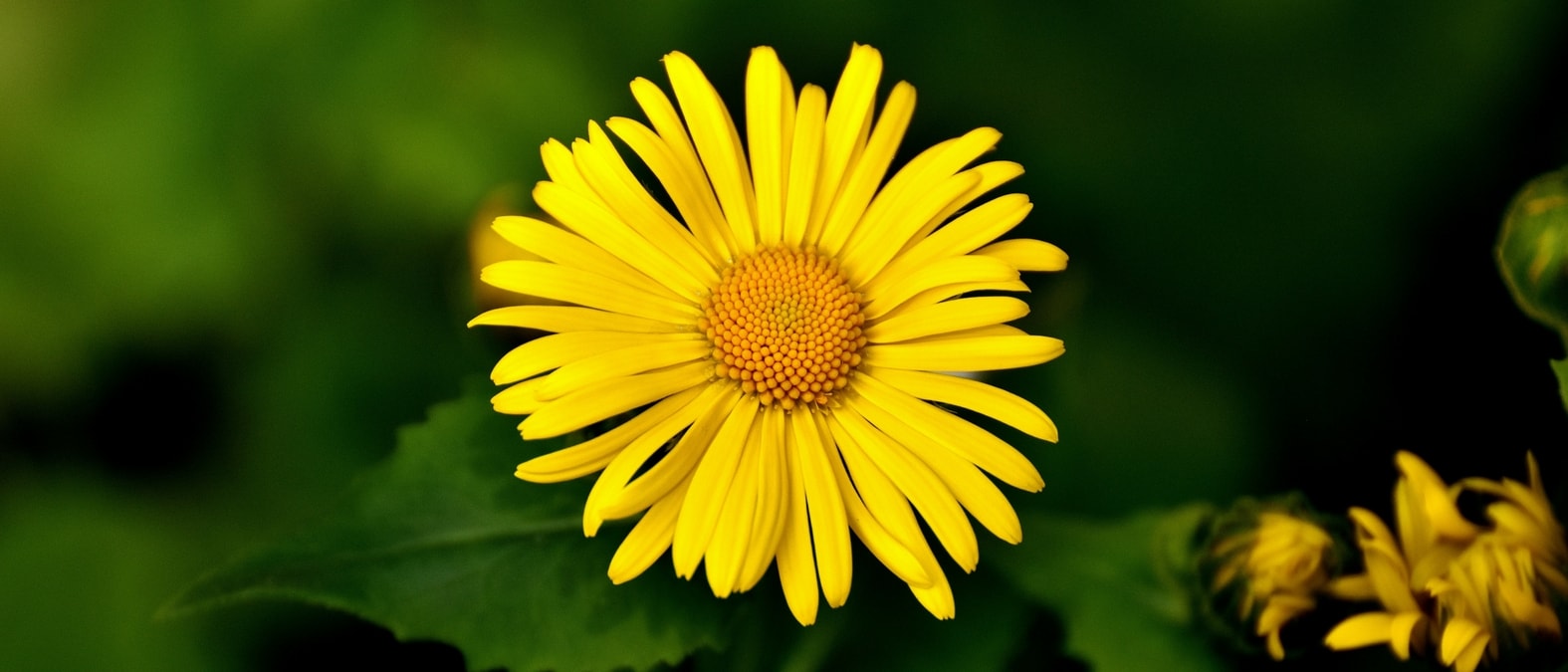
The Pasqueflower (Pulsatilla vulgaris)
The pasqueflower is a remarkable small perennial, prized for its delicate blooms that appear as early as March. Its bell-shaped, starry flowers display a deep, velvety violet hue, sometimes tinged with lighter highlights, beautifully contrasting with its golden centre.
Its finely divided foliage and stems are covered in a silvery, silky down, adding a touch of softness and lightness to the plant—even after flowering, when charming feathery seed heads emerge.
Perfect for rockeries, sunny slopes, or dry gardens, the pasqueflower thrives in well-drained soils and dislikes waterlogged conditions. Plant it in a light, gravelly, or sandy substrate with full sun exposure to encourage abundant flowering. Hardy and low-maintenance, it withstands cold and drought once established.
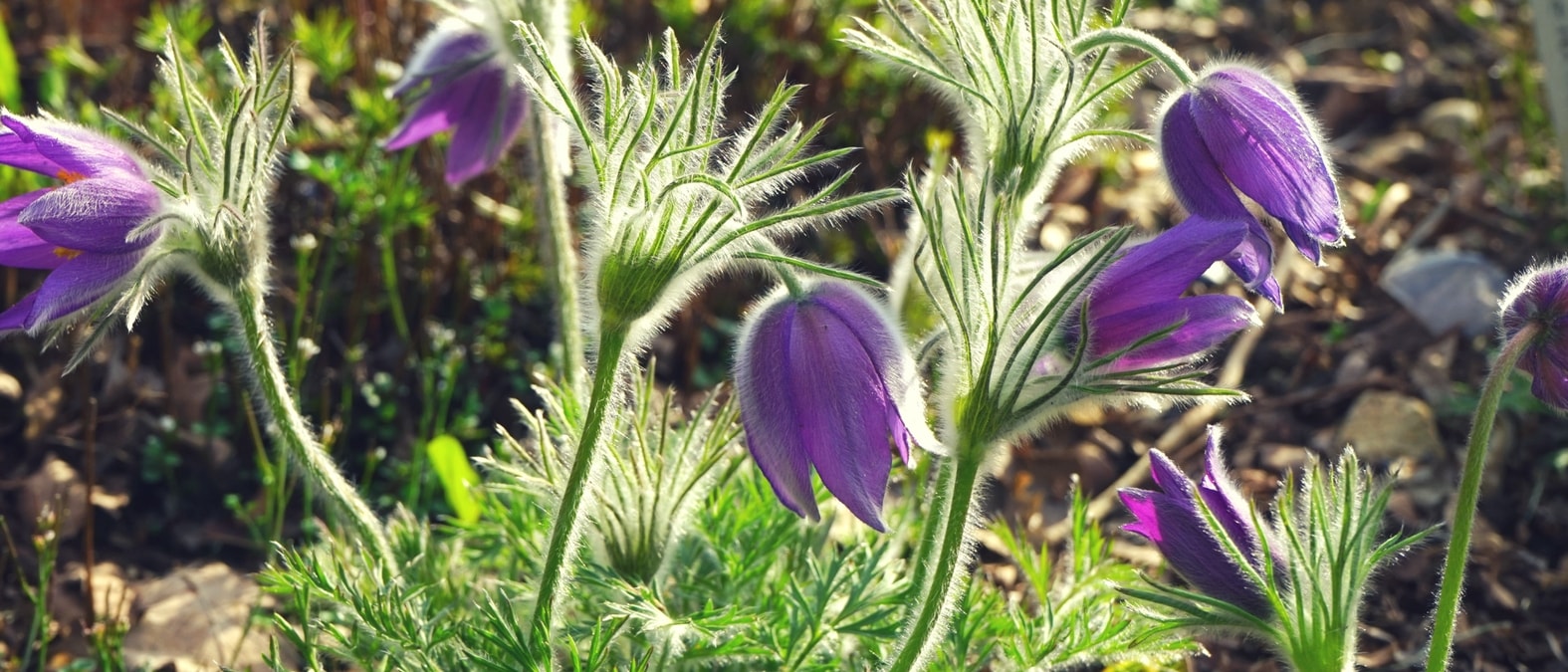
The Caucasian Forget-me-not (Brunnera macrophylla)
Brunnera macrophylla is an elegant perennial that charms with its delicate, airy blooms from early spring. Its small light blue flowers, adorned with a dainty white centre, resemble those of common forget-me-nots, bringing a refreshing touch to shady areas.
Its broad heart-shaped foliage, often deep green or silver-variegated depending on the variety (like the stunning ‘Jack Frost’), is equally decorative. It forms an excellent dense ground cover, perfect for dressing the base of shrubs or filling shaded spaces.
Brunnera macrophylla thrives in shade or partial shade, in cool, humus-rich, well-drained soil. Pair it with hostas or ferns for a lush woodland effect. Low-maintenance, it requires little care beyond watering during prolonged dry spells.

The Thlaspi (Iberis sempervirens)
Also known as candytuft, Iberis sempervirens is a Mediterranean perennial prized for its brilliant white blooms, which abundantly illuminate gardens from March to April. Its small flowers form dense clusters, creating a veritable carpet of light that contrasts beautifully with its dark green evergreen foliage.
With its spreading habit and compact growth, it makes an excellent ground cover, perfect for borders, rockeries, or the front of flower beds.
Plant it in full sun, in well-drained soil, even if poor or chalky. This Thlaspi is highly drought-resistant and requires minimal maintenance, making it ideal for dry gardens or challenging conditions. Lightly prune after flowering to maintain a dense, tidy shape.
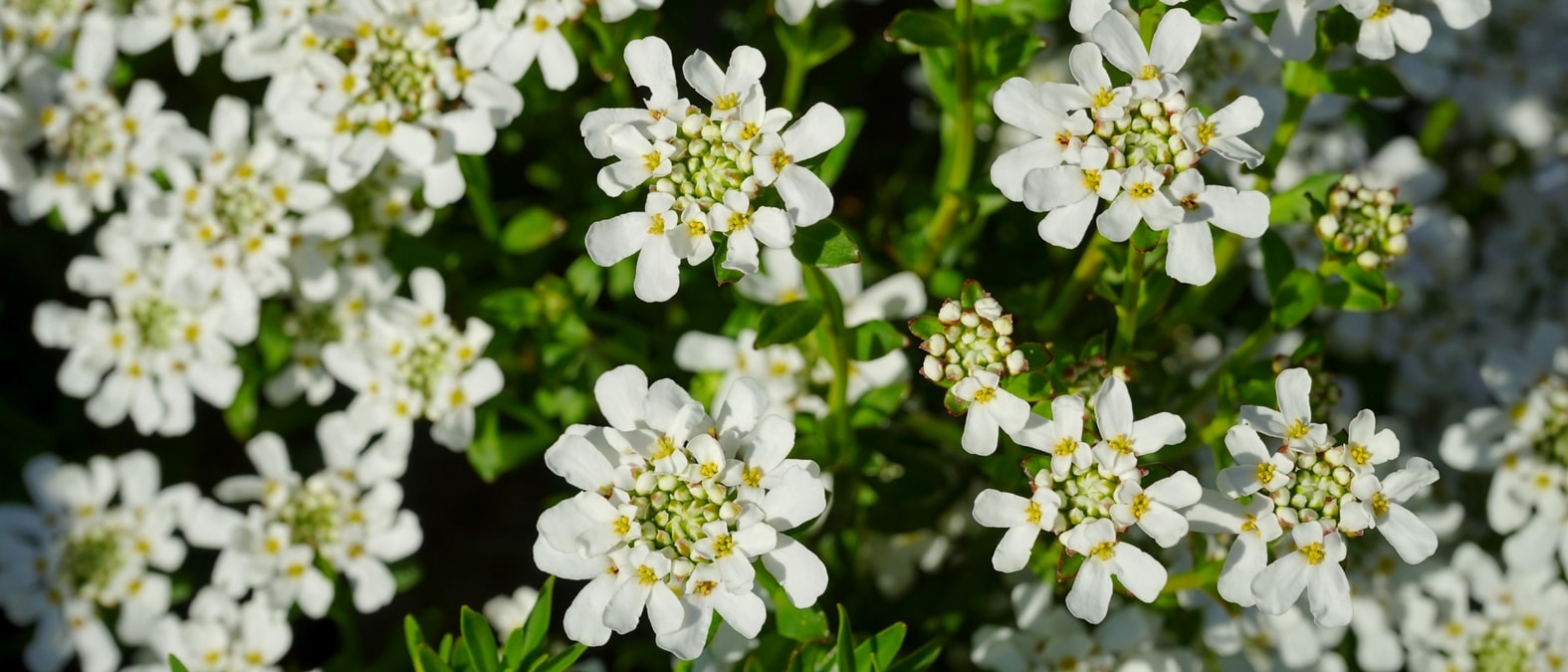
- Subscribe!
- Contents

































